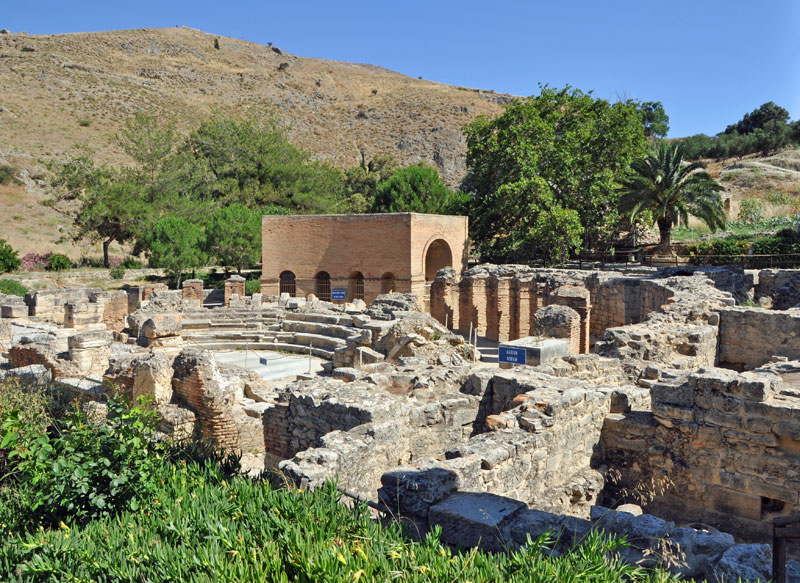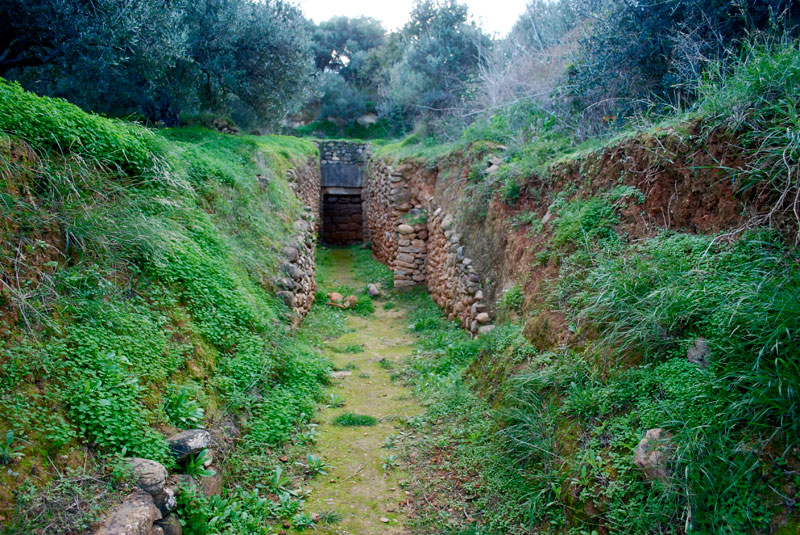Crete
Ancient Crete was a center of Minoan civilization which was believed to had arisen as early as in 4th millennium BC. It spread across Aegean and Medditerranean islands and flourished for the next three thousand years. There is some evidence, such as handcraft items, that hints that the culture of Minoans even spread to the Greek mainland as well as to Egypt and Mesopotamia. Due to the location of the island which lies at the heart of the trade route system between Europe, Middle East and Africa, it is only natural to believe it was an important mercantile society, which it was as their art products can be traced way beyond the island of Crete. And to make things even better, they were on a self-sufficient land with good climate and feritle soil which made it perfect for growing grains such as corn and wheat, as well as olives and grapes from which they made olive oil and wine, extremely valuable trading resources. Not to mention that they were on an island and had no immediate danger to worry about from a hostile neighbour. But, as the saying goes, the good comes with the bad and it was the same for Minoans on the island of Crete because, despite all its natural wealth and isolation from predators, it lies on a geologically unstable area at the conjuction of Eurasian and African tectonitc plates and was therefore affected by numerous earthquakes that have shifted the terrain and, consequently, decimated some of the ancient cities. The most fatal of which was the Thera or Santorini volcanic eruption that led to a related eartquake or tsunami that devastated the island of Crete and led to the fall of Minoan civilization.
Not much is known about the Minoan society but as the evidence shows, majority of their people were farmers, potters and merchants. It is believed that it was under the monarchic rule which was popular at the time but there is no clear evidence that this was indeed the case and If so, taxes were most likely paid in goods and other manufactured products. The early Minoans used hieroglyphs similar to Egyptians as their writing system which was later used as a basis for the later developed Linear A and Linear B writing systems. The main city of Crete and Minoan culture in general was Knossos and, as the evidence shows, the Minoans practiced sports like bull jumping and boxing.
Myths of gods and heroes
According to mythology, Crete was a place of the legendary king Minos who worshipped bulls above any other creatures and, because of it, Poseidon granted him a special bull that had risen from the sea but demanded that it was sacrificed to him over a certain period of time. But Minos was so overwhelmed by the bull that he decided to trick the god of sea by sacrificing his best specimen but an ordinary bull instead. This led to unfortunate chain of events as the god made Aphrodite to cast a spell on his wife to become in love with the bull and later made love with it and gave birth to the Minotaur. Therefore, Minos instructed Daedalus, a famous inventor, to construct the labyrinth and entrap this abomination of a creature. Later, Theseus came to kill it and rescue his people that were set to be sacrificed to Minotaur. It is also the island where Zeus was born, in a famous Dictian cave under the Mount Dicte, where his mother Rhea or, according to some sources, his grandmother Gaea hid him from his vicious father Cronus. It is said that Zeus also brought Europa to Crete when he abducted her from Phoenicia and it is where Orion had crossed his path with Artemis and became her friend and hunting partner. Heracles is also said to had come to Crete in his seventh labour in which he was tasked to capture a Cretan bull for Eurystheus.
Monuments of Ancient Crete
The biggest monument of Crete are the remains of the ancient Palace of Knossos where several parts such as the Throne room, Theatral area, Grand staircase and Queen's Megaron have partially survived, as well as the most preserved and restored Northern entrance with bull frescos and some parts of the wall. Another landmark can be found on the western end of the southern costal ridge where the remains of a settlement of Hagia Triada lie. The most preserved monument is the limestone Sarcophagus from the late bronze age and it is where the most tablets with linear A writing were excavated. 1.9km North-East from there, lies an anicent Minoan tholos tomb that was built in the same style as found in Mycenae. Nearby, there is also an ancient village of Gortys which was the Roman capital of Crete and is fairly preserved to this day. To the East along the northern coast, ruins of the Gournia, once a Minoan palace, can be found. Another such site is a palace of Malia that lies to North-West of Gournia and a palace of Phaestos, the second most important Minoan city, which lies in the Southern part of the island. There are also other archeological sites such as ruins of Zakros and Palekastro that were important Minoan commercial settlements.
Knossos palace

Reconstructed Northern entrance with bull fresco
Ruins of Gortys

Remains of the city Gortys with a Roman touch
Tholos tomb

Ancient burial place near the village Kamilari